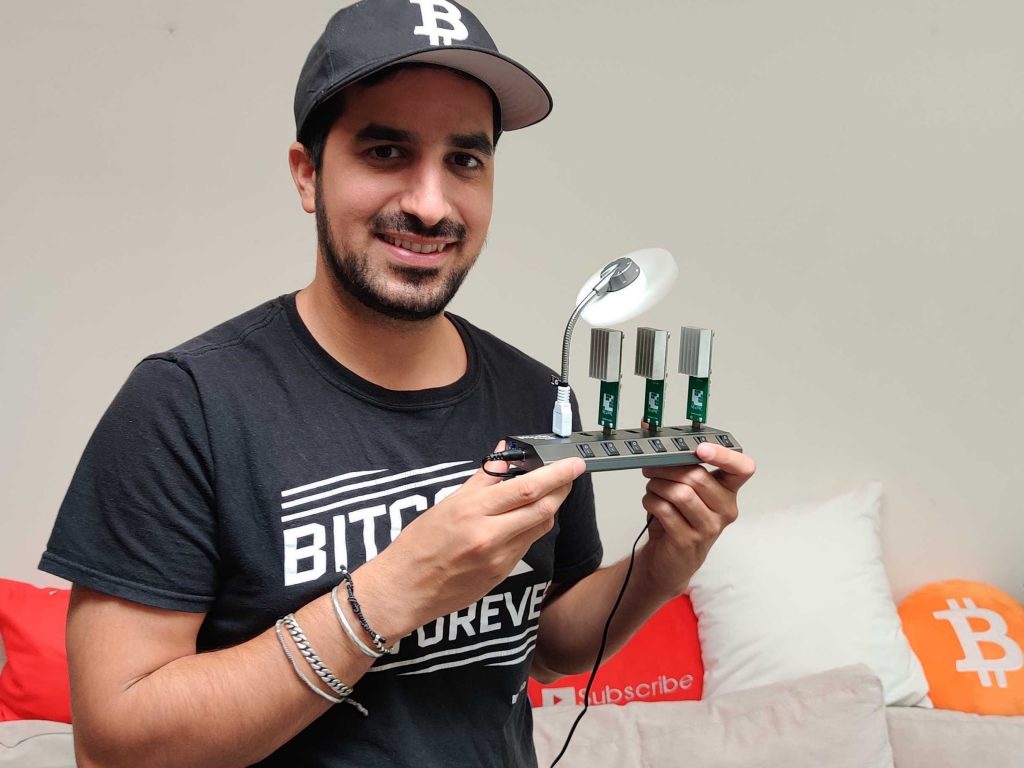- Idan Abada says people buy the mini miner to try and solve a block, learn to mine, or overclock.
- It’s not really profitable unless it solves a block, which is statistically a very slim chance.
- JP Baric shares the two data points miners must consider when purchasing a miner for profitability.
What asset has experienced a 588% surge in the last year? It’s not the S&P 500 stock index or the Nasdaq.
Love it or hate it, bitcoin has topped headlines with its price action, prompting individuals and firms to seek it out in various ways. And in April, the 12-year-old cryptocurrency reached an all-time high above $63,000 before crashing by 50% within months.
Idan Abada was a manager of an online store that sold remote-controlled gadgets such as toy planes and cars before becoming a crypto miner in 2015. He’s now the founder of Bitcoin Merch, an online store that sells hardware for miners.
The store was founded in 2017, a year when his industry may have been considered niche even as bitcoin leapt from $1,000 to nearly $20,000. But today, he’s firmly part of a growing trend: The global cryptocurrency mining hardware market (ASIC hardware and GPUs) is expected to grow by $2.80 billion at a compounded annual rate of over 7% from 2020-2024, according to Technavio, a global market-research firm.
Buying bitcoin today may get the average investor a small fraction, so mining it may seem like a great alternative to earning it without purchasing it on an exchange. That’s why when Abada posted a couple of videos showing off a mini bitcoin-mining rig that costs around $875 on his TikTok called “howmuchchannel.” They went viral, racking up millions of views.
One video with over 2.6 million views shows Abada sitting at Starbucks, mining from his laptop and the rig. It is a scene quite different from the large facilities known as farms that are often associated with bitcoin mining.
'Minimal' rewards
The main product, known as NewPac, is a double ASIC chip that if purchased alone, retails for about $80 at Bitcoin Merch. The chip plugs into a USB hub, which can be bought in a package and can hold up to 10 chips and a mini fan.
But even though it does mine bitcoin and bitcoin cash, the amount is likely very minimal, says Abada.
Mark D'Aria has been mining since 2013, and he's the CEO of Bitpro, a mining consulting firm that also liquidates mining rigs and farms that are no longer profitable. He told Insider he likes the product and finds it interesting.
"I wouldn't recommend it as a way to actually make money, but as a hobby, this is fantastic," D'Aria said.
D'Aria notes that it's probably not profitable if used to join a mining pool, a process by which a miner shares their processing power over a network to split the reward equally, because you would lose money from electricity costs. But he added that you might see a little profit if you were to mine solo.
"If you were to try to mine in the sense of how much am I going to make today, then it's not going to be the best thing you can buy," D'Aria said.
Pros and cons of mini rigs
There are three main reasons why people purchase the rig, Abada says.
One is that it can be used solo to try to solve a block, which happens every 10 minutes. The reward for solving a block is currently 6.25 bitcoin. But Abada says the chances of that are one in a billion and compares it to playing the lottery every 10 minutes.
D'Aria agreed with this analogy. "If you're looking at it in terms of, 'I have a chance to be the one to get that 6.25 bitcoin', it's a small chance, but it is a chance, like buying a Powerball ticket. Yes, that's absolutely true. You have a chance."
Abada said the second reason people purchase it is for educational purposes. Anyone looking to get into bitcoin mining will realize it's both an expensive endeavor and one that has a learning curve. This rig is a great way to learn before taking on the big rigs. Customers also buy them as gifts for someone who wants to learn.
Third, people can try to play with overclocking, which refers to pushing the rig to mine more than what it's designed for, Abada said.
JP Baric, CEO of MiningStore, runs multiple bitcoin mining farms, hosting over 3,000 S19 Pro miners for internal profit and on behalf of clients. He says for anyone who wants to mine profitably, there are two components that need to be considered: the electricity costs and the terahash, which is the speed of the machine.
"It's almost like a car - you have how fast the car is going, [or] how many miles per hour, and that's the same as a terahash. Then, you have how many gallons you get per mile," Baric said.
New models also come out every few years as older models become less efficient. All of this would also need to factor in the volatile price of bitcoin.
Miners often find it easier to purchase an ASIC miner and have it hosted at a farm where it's maintained and pooled with other miners in exchange for a monthly fee that is paid in either bitcoin or fiat, depending on the host.

